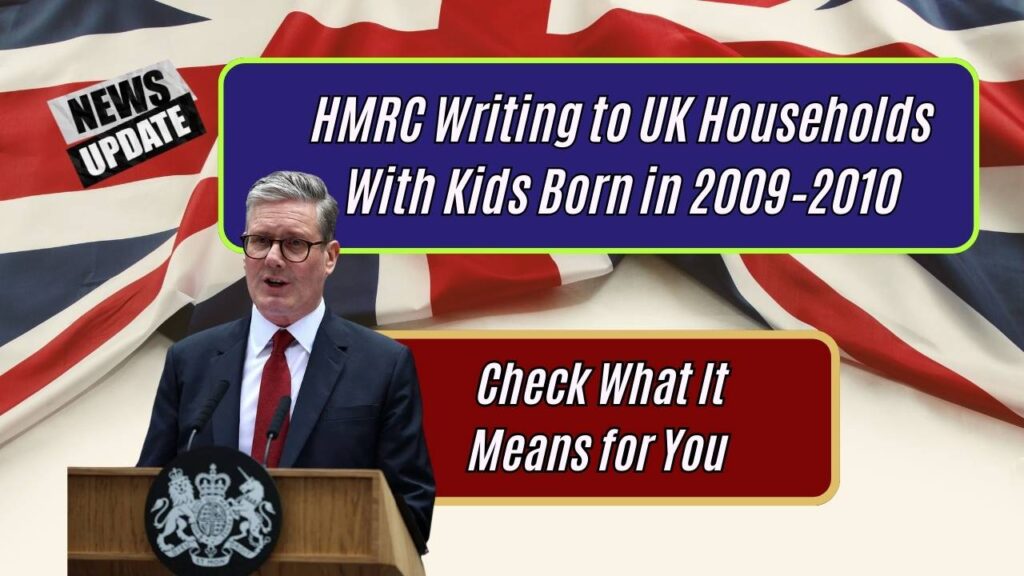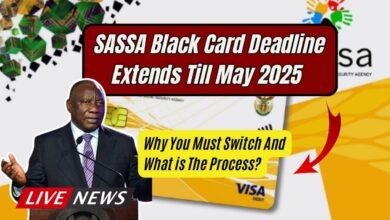HMRC Writing to UK Households With Kids Born in 2009–2010: Check What It Means for You
HMRC Writing to UK Households With Kids Born in 2009–2010 – If you’re a parent or guardian in the UK with a child born between 2009 and 2010, there’s a good chance you’ve recently received a letter from HM Revenue & Customs (HMRC). These letters are part of a nationwide initiative aimed at two critical areas: unclaimed Child Trust Funds (CTFs) and the continuation of Child Benefit payments for teenagers.

Understanding the implications of these letters is essential to ensure you’re not missing out on financial benefits your family is entitled to. Let’s delve into what these communications mean and how you can take action.
HMRC Writing to UK Households With Kids Born in 2009–2010
| Topic | Details |
|---|---|
| Child Trust Funds (CTFs) | Tax-free savings accounts for children born between 1 September 2002 and 2 January 2011. |
| Unclaimed CTFs | Approximately 670,000 accounts remain unclaimed, averaging £2,212 each. |
| Child Benefit Payments | Automatically stop on 31 August after a child’s 16th birthday unless extended. |
| Extension Deadline | Parents must confirm their child’s continued education or training by 31 August. |
| Action Required | Use HMRC’s online tools to locate CTFs and extend Child Benefit claims. |
| Official Resources | Find a Child Trust Fund, Child Benefit Extension |
HMRC’s recent communications are a timely reminder for families to take stock of their financial entitlements. By locating unclaimed Child Trust Funds and ensuring the continuation of Child Benefit payments, you can secure valuable financial support for your child’s future. Utilize the free tools provided by HMRC to take action today. And don’t wait—because the clock’s ticking, and that money belongs to your kid.
Understanding Child Trust Funds (CTFs)
What Are CTFs?
Child Trust Funds are long-term, tax-free savings accounts established by the UK government for children born between 1 September 2002 and 2 January 2011. The initiative aimed to encourage savings habits from an early age. Each eligible child received an initial government voucher, typically £250, with additional contributions for low-income families. Some children also received a second payment at age seven.
Accessing the Funds
Children can take control of their CTF at age 16 but can only withdraw funds once they turn 18. The money can be used for various purposes, such as education, starting a business, or other personal goals.
Unclaimed CTFs
As of April 2024, approximately 670,000 matured CTFs remain unclaimed, with an average value of £2,212. Many account holders are unaware of these funds, especially if the accounts were set up automatically by HMRC when parents did not use the initial voucher.
Why So Many Are Unclaimed
In many cases, families moved or forgot which provider held the account. Others simply weren’t aware that HMRC set up accounts by default. Young people may also not know they have funds waiting for them unless informed.
HMRC’s Outreach to Households
HMRC is proactively reaching out to households to inform them about unclaimed CTFs and the need to extend Child Benefit claims. These letters aim to ensure families are aware of the financial assets and benefits available to them.
The letters include guidance on how to find a CTF and reminders to act before the Child Benefit deadline. It’s all part of an effort to improve financial awareness and get people what they’re owed.
Extending Child Benefit Payments
When Do Payments Stop?
Child Benefit payments automatically cease on 31 August following a child’s 16th birthday unless parents confirm the child is continuing in approved education or training.
How to Extend Payments?
To continue receiving Child Benefit:
- Confirm Education or Training: Ensure your child is enrolled in full-time education or approved training.
- Use HMRC’s Online Services: Log in to the HMRC app or GOV.UK website to update your claim.
- Meet the Deadline: Submit the necessary information by 31 August to avoid payment interruptions.
Importance of Timely Action
Failing to extend your Child Benefit claim can result in the loss of up to £1,354.60 per year for the eldest or only child and £897 for each additional child. Timely action ensures uninterrupted financial support.
Common Pitfalls and Tips
- Moved house recently? Make sure HMRC has your correct address to receive updates.
- Lost track of account details? Use the official CTF finder to locate forgotten funds.
- Don’t trust third-party sites that charge fees to find your CTF. HMRC’s tool is free.
Step-by-Step Guide to Taking Action
Locating a Child Trust Fund
- Gather Information: You’ll need the child’s National Insurance number and date of birth.
- Use the Online Tool: Visit the Find a Child Trust Fund page on GOV.UK.
- Submit a Request: Fill out the online form to request details about the CTF provider.
- Await Response: HMRC will send a letter with the provider’s information, usually within three weeks.
Extending Child Benefit
- Access Your Account: Log in to your HMRC online account or use the HMRC app.
- Update Information: Confirm your child’s continued education or training status.
- Submit Before Deadline: Ensure all updates are made by 31 August to maintain benefit payments.
Additional Resources
- MoneyHelper – Child Trust Funds
- HMRC Contact Details
- Approved Education and Training List
£200 Cash Boost for Millions – Check If You’re Eligible for the 2025 Payout!
£100 DWP Cost of Living Payment Incoming – Is Your Household on the List?
“DWP Just Announced a £300 Payment – Everything You Must Know for 2025!”
FAQs About HMRC Writing to UK Households With Kids Born in 2009–2010
Q1: What if I didn’t open a CTF for my child?
A: If you didn’t use the initial voucher, HMRC would have opened an account on your child’s behalf. You can use the Find a Child Trust Fund tool to locate it.
Q2: Can I still claim Child Benefit if my child is in an apprenticeship?
A: Child Benefit continues for unpaid approved training. However, paid apprenticeships may not qualify. Check the approved training list for specifics.
Q3: What happens if I miss the 31 August deadline?
A: Payments will stop, but you can still update your claim. However, there may be delays in reinstating payments, so it’s best to act promptly.
Q4: Is there a cost to use HMRC’s online tools?
A: No, HMRC’s services for locating CTFs and updating Child Benefit claims are free. Be cautious of third-party services that charge fees for these services.
Q5: Can the CTF money be transferred to an ISA?
A: Yes, once the account holder turns 18, the CTF can be transferred into an adult ISA to continue saving tax-free.







